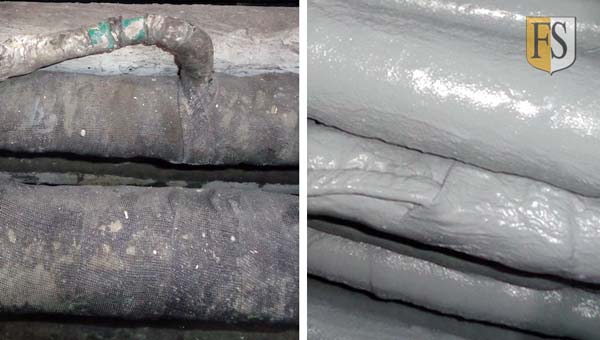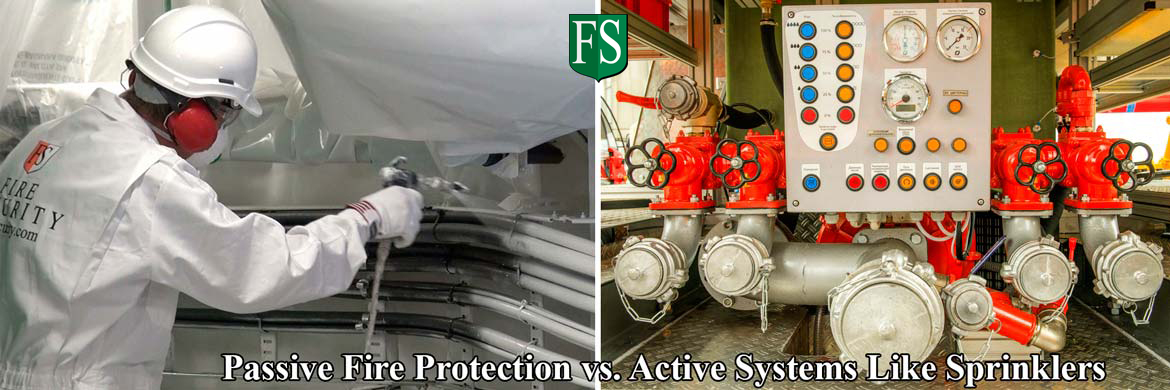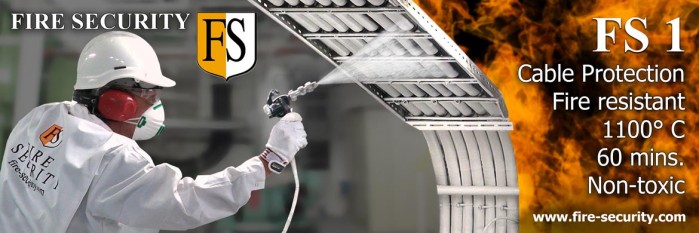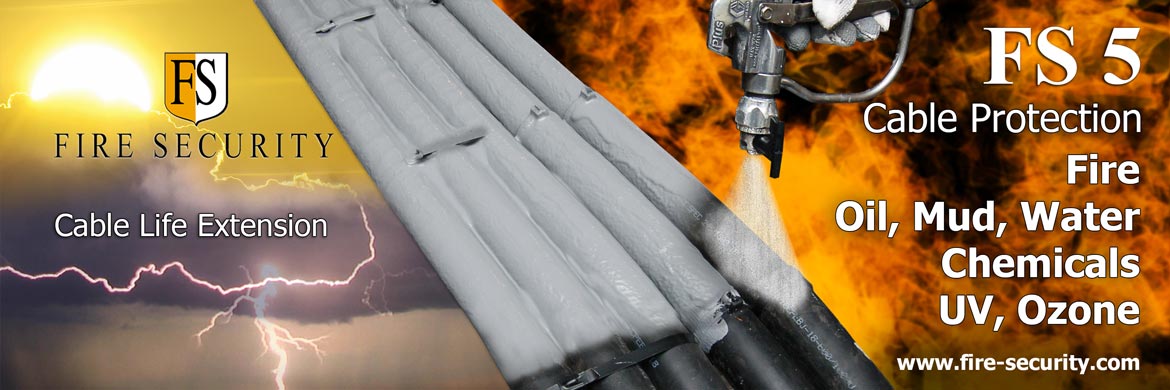Passive Fire Protection Is Key To Reducing Plant Downtime.
Learn the key differences between fireproofing with passive fire protection vs. active systems.
The high installation and maintenance cost is the main disadvantage of active systems like Fire Suppression, Fire Extinguishing, and Firefighting. Add to this; they may not work properly when a fire occurs. Therefore, Passive Fire Protection (PFP) is typically the answer as it has zero maintenance once applied, no annual inspections, and no service call-backs. Usually, unless otherwise requested, passive fire protection is the best answer for asset protection from fire while maintaining profitability. In many cases, cable fire protection can substitute Fire Fighting Systems and Fire Suppression Systems.
There are various forms of passive fire protection in the marketplace, ranging from structural steel fire protection coating to fire-stopping and coatings to stop flame spread on fire rate cables and other substrates.
Learn how Passive Fire Protection was implemented at the Shagang Steel plant in China.

Fire coating applied to a cable splice will prevent fire.
Let’s take electrical cable protection as an example. Electrical cable fires can spread vertically up to 20m/minute. Imagine this in a high-rise! Generally, most fires start via an electrical fault within a factory, high-rise, or warehouse. And generally, once these fires are started, the structure or plant and equipment are lost. This is usually due to non-maintained fire stopping or even ineffective active systems like sprinklers or suppression etc. This can depend on the individual country, its legislation, and how the legislation is implemented and enforced.
How does passive fire protection work?
Passive fire protection prohibits the fire source from spreading flames from one area to another via the electrical cables. Obviously, we need the cables for the asset to function, and protecting these from fire is a straightforward process of “Cable Coating.” Cable Coating, instead of cable wrapping, stops the fire at its source (cabinets, switchgear, machinery, etc.), isolating the fire and isolating the damage to plant and equipment. This also means downtime is to a minimum for machinery replacement. Electrical cables are rarely kept in stock any longer, so most HV and LV cables (and data cables for that matter) are made to order, which can take weeks with manufacturing and transport. Extending downtime and loss of profitability for the asset. Depending on the asset, this can be millions a day in loss of production and revenue. Insurance may cover some aspects, but insurance does not cover the loss of customers.
How does FS cable coating differ from cable wrapping materials for passive fire protection?
There are many cable wrapping companies in this world. The main difference between them is that only some products stop or hinder the spread of a flame and fire. These are the old standards and are now considered the lower grade form. Quality cable tray fire protection coating now fire rate cables, whether in a single format or trays. And a quality cable coating should also be tested in well-known and registered laboratories, such as Warrington, BRE, or FM Global. Fire Security, a Norwegian company, has developed a cable coating that not only fire rates the cable but has zero flame spread, zero toxicity, zero halogens (a must), and low smoke emission. Tested and approved for rail carriages (above and underground). The only one in the world, and all at 1.0mm!
What are the benefits of passive fire protection?
In applying cable coating, the facility is generally saving the asset from the flame spread and cable replacement, which is paramount in having the asset up and running as soon as possible after a fire. Even if the asset carries “Fire Rated Cables,” the cables need to be replaced after a fire. If a cable is coated, there is no need to replace the cable; the coating sacrifices itself for cable survival.
Needless to say, this is always going to be a financial choice, to invest in protecting an asset correctly to lower downtime when a fire happens. Or to gamble on fire not happening. But it will happen; it’s just a matter of time. Contact Fire Security to speak about passive fire protection services across South America, the USA, Europe, Asia, and the Middle East.



